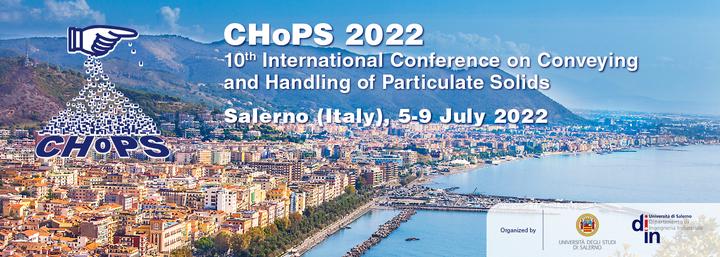 Image credit: CHoPS
Image credit: CHoPS
Abstract
Granular materials are extremely common with approximately 80% of all industrial material feedstock being granular in nature. Triaxial tests are commonly used to evaluate the mechanical response of geomaterials under loading and can be applied to all granular materials providing valuable information on the materials behaviour. Discrete Element Method simulations of such tests have been carried out with the aim of gaining insight into the micro and macro- mechanical responses of the material under the triaxial stress application. In this paper, the DEM simulations of monotonic triaxial tests including the membrane boundary condition are presented. The simulations attempt to model railway ballast with and without geogrid reinforcement and these are compared with experiments for validation.
A common approach in modelling is to apply loading to a representative volume of a material with periodic boundaries instead of modelling the physical boundaries. In this case the effects of the rigid piston and flexible membrane in a triaxial test are ignored. If the physical test is modelled, the boundary conditions are sometimes imposed by using rigid geometric assemblies to compress the sample or by applying forces directly to the sample. Both approaches ignore the presence of the flexible elastic membrane and the associated boundary condition effects which can lead to a poor representation of the physical test.
In this study the membrane boundary of the triaxial test is modelled using a bonded assembly of particles to model the flexible membrane and investigate the effect of the membrane stiffness on the bulk stress-strain response. The confining pressure to the sample is achieved by applying individual forces to the bonded membrane particles to simulate a uniform radially inward equivalent stress. A coarse-graining analysis is performed to study the evolution of the internal stress field in the sample during loading. The influence of geogrid reinforcement in the ballast is also studied by comparing the results with and without the geogrid. The geogrid is modelled as a bonded assembly of particles that is calibrated against experimental measurements.
The modelling approach leads to a close agreement with published experimental data on the railway ballast. The DEM model is also able to determine the stiffening effect of the rubber membrane used in the experiments, allowing for an improved interpretation of the test results. The computed internal stress field reveals significant stress non-homogeneity which provides useful insights of the evolving state of stress in the ballasts during its loading to failure.
Slides can be added in a few ways:
- Create slides using Wowchemy’s Slides feature and link using
slidesparameter in the front matter of the talk file - Upload an existing slide deck to
static/and link usingurl_slidesparameter in the front matter of the talk file - Embed your slides (e.g. Google Slides) or presentation video on this page using shortcodes.
Further event details, including page elements such as image galleries, can be added to the body of this page.